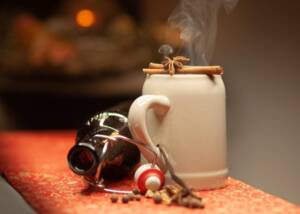Marathon victory with brandy and poison
News News blog
Was there a runner trying to eliminate his competition? Read the explanation and other amazing details about the marathon race at the 1904 Olympics here.

At the marathon of the 1904 Olympic Games in St. Louis, not everything is as standardized as in later times. Despite 32°C heat, the runners do not start in the cool morning, but at 3 p.m. in the blazing afternoon sun. Only the start and finish are in the stadium, the rest of the race takes place on a dusty road. To make matters worse, chief organizer James E. Sullivan had allowed only one water station - for research on "purposeful dehydration."
With 10 miles to go, Thomas Hicks of the U.S. is a mile and a half in the lead, but is so exhausted that he wants to lie down for a minute. His coaches, however, discourage him from doing so and instead administer him brandy mixed with strychnine, because the latter is supposed to stimulate the central nervous system in low doses. After several of these "cocktails," Thomas Hicks has hallucinations and can barely walk. He then no longer manages to cross the finish line on his own; his trainers lift him up and carry him across the finish line while his legs are still kicking in the air as if he were running himself. Several doctors immediately take care of him off the track, otherwise he probably wouldn't have survived his victory much longer.
But there were also other memorable events at this marathon:
- For example, Thomas Hicks was not the first winner of this marathon. Before him, Fred Lorz (also from the USA) had almost been awarded the gold medal. He was the first to cross the finish line after 3 hours and 13 minutes. But he had simply "shortened" - after 9 miles he had retired from the race and had driven back with a car towards the stadium. But after the 19th mile the car broke down and Lorz then just ran the rest of the way to the stadium, where he was already celebrated as the winner. But his cheating came to light and he was initially banned for life, although he claimed he was only joking. Since he was finally believed, his ban was reduced to one year.
- Andarin Carvajal from Cuba only made it to the marathon at the last minute because he had lost his money in New Orleans and had to hitchhike the rest of the way. He then had to start running right away in his street clothes. On the way, he picked a few apples during the race, since he hadn't eaten in 40 hours, but the apples were rotten and he had to lie down and rest a while because of bad stomach cramps. Despite these adverse conditions, he still finished as the 4th runner.
- Due to the poor water supply, the heat, the dusty road and the cars of the officials, which kicked up additional dust, some runners had to struggle with health problems. William Garcia from the USA had collapsed off the course with discomfort from inhaling the dust. John Lordan (winner of the 1903 Boston marathon) and Sam Mellor (winner of the 1902 Boston marathon) also had to give up with health problems.
-The Frenchman Albert Corey, who won 2nd place, was listed as a participant for the USA. Thus all 3 medals went factually to the USA.
With all this in mind, it is not surprising that out of 32 runners from 4 countries, only 14 participants made it to the finish line - less than half and the worst rate ever.
Thomas Hicks' entry time was the worst by then, 29 minutes worse than the entry time measured to date in 1900.










